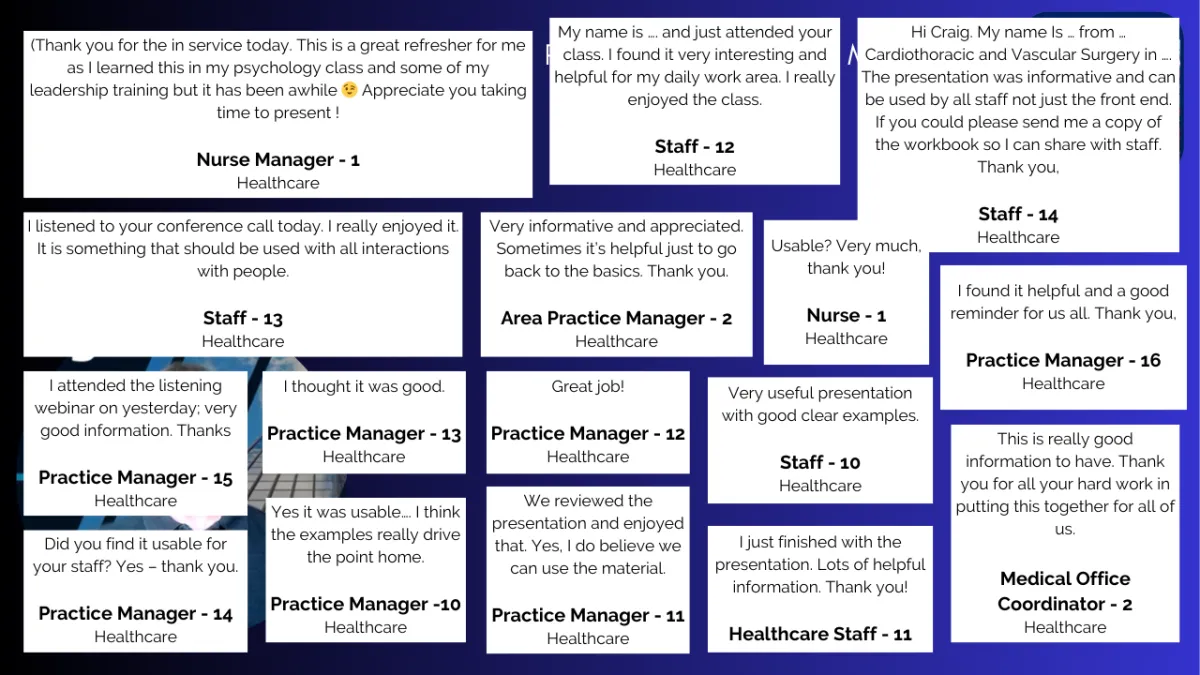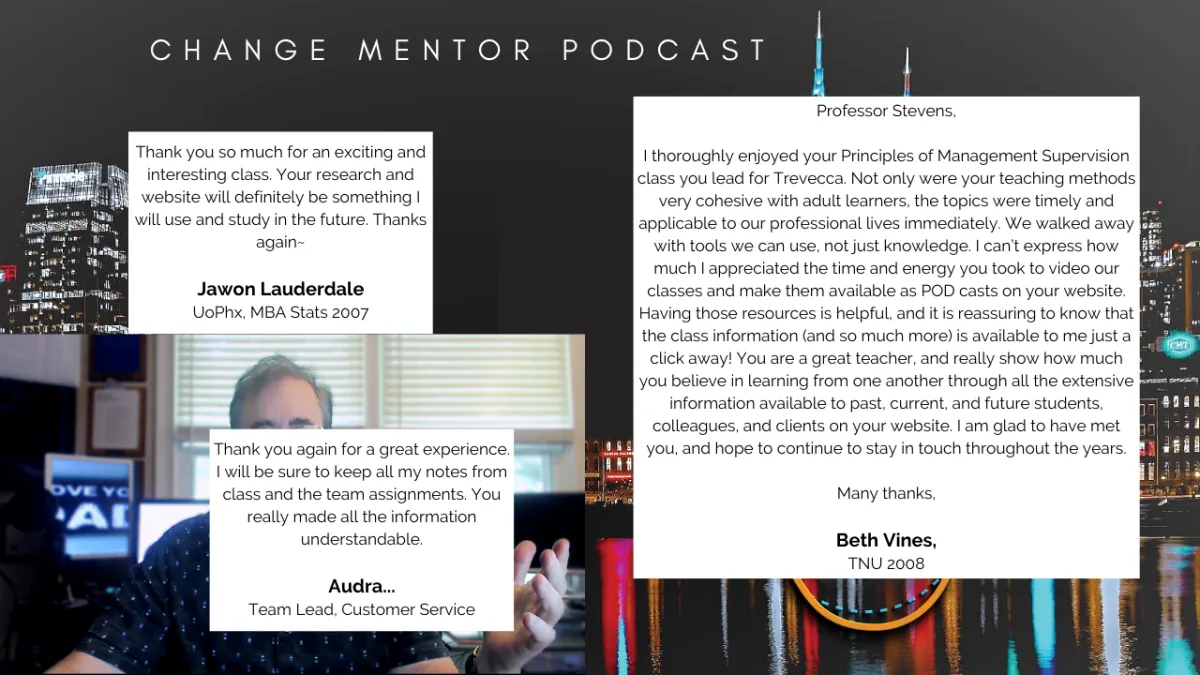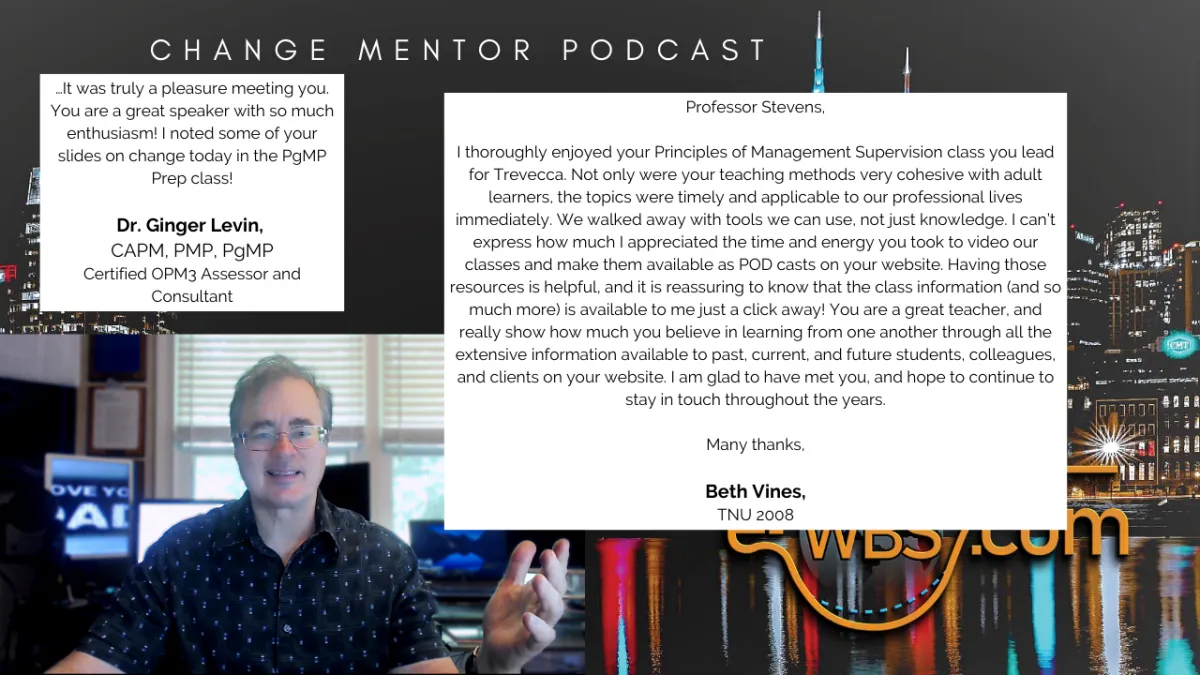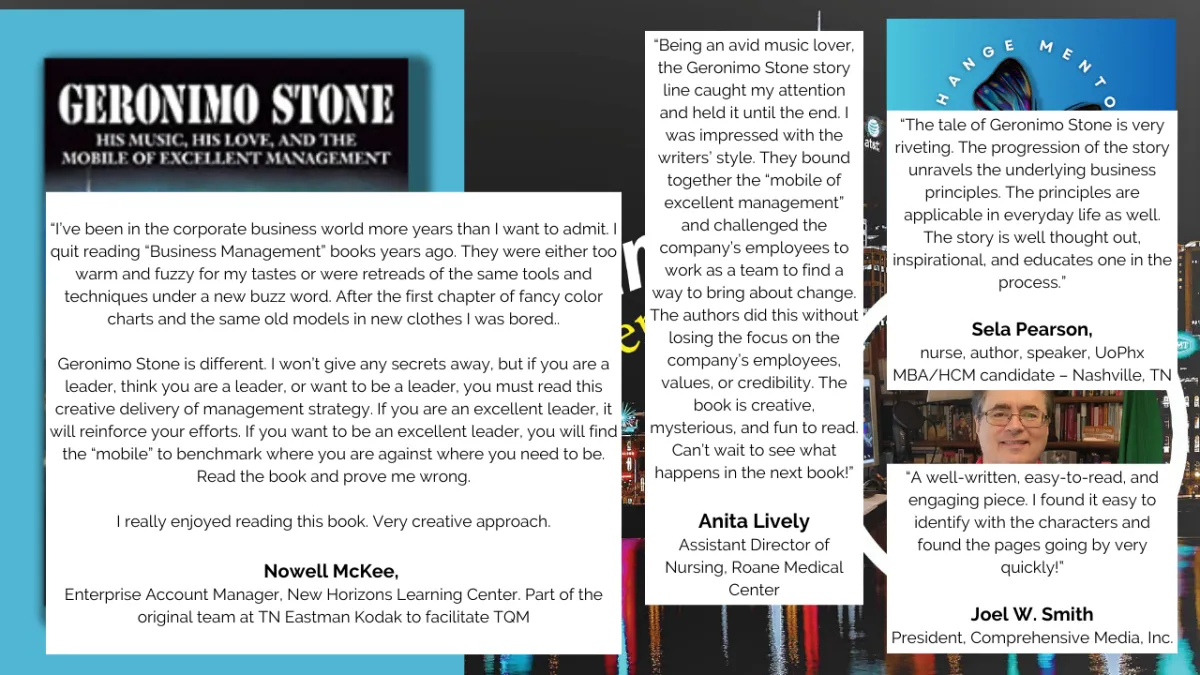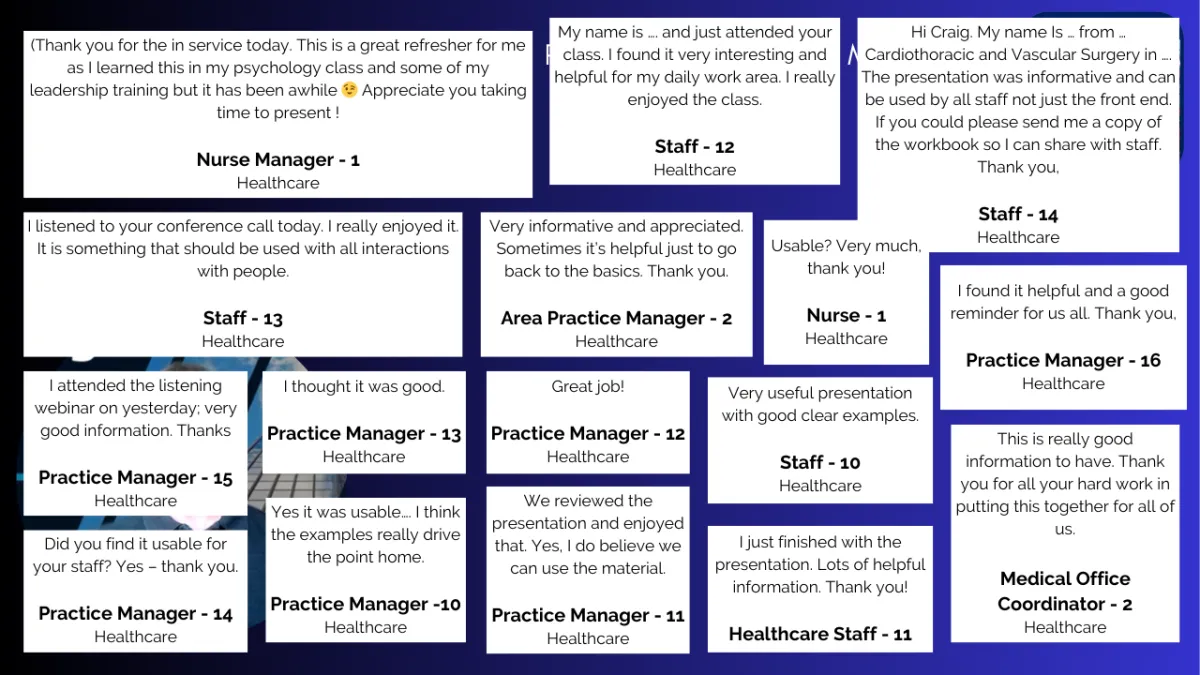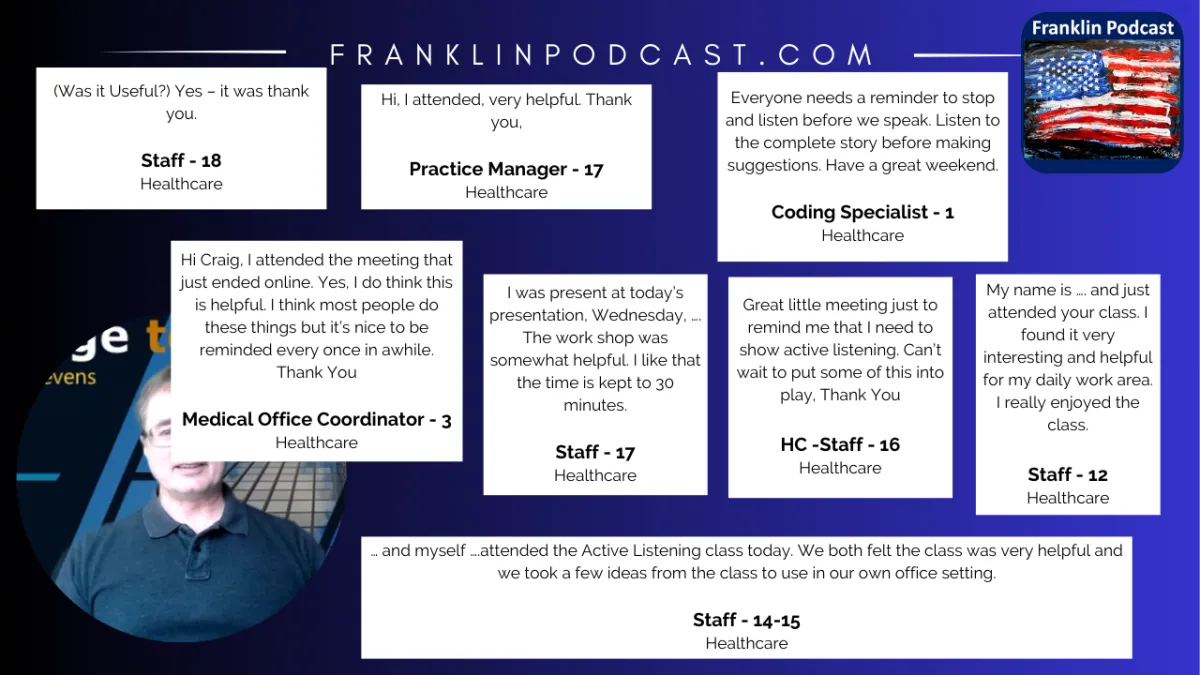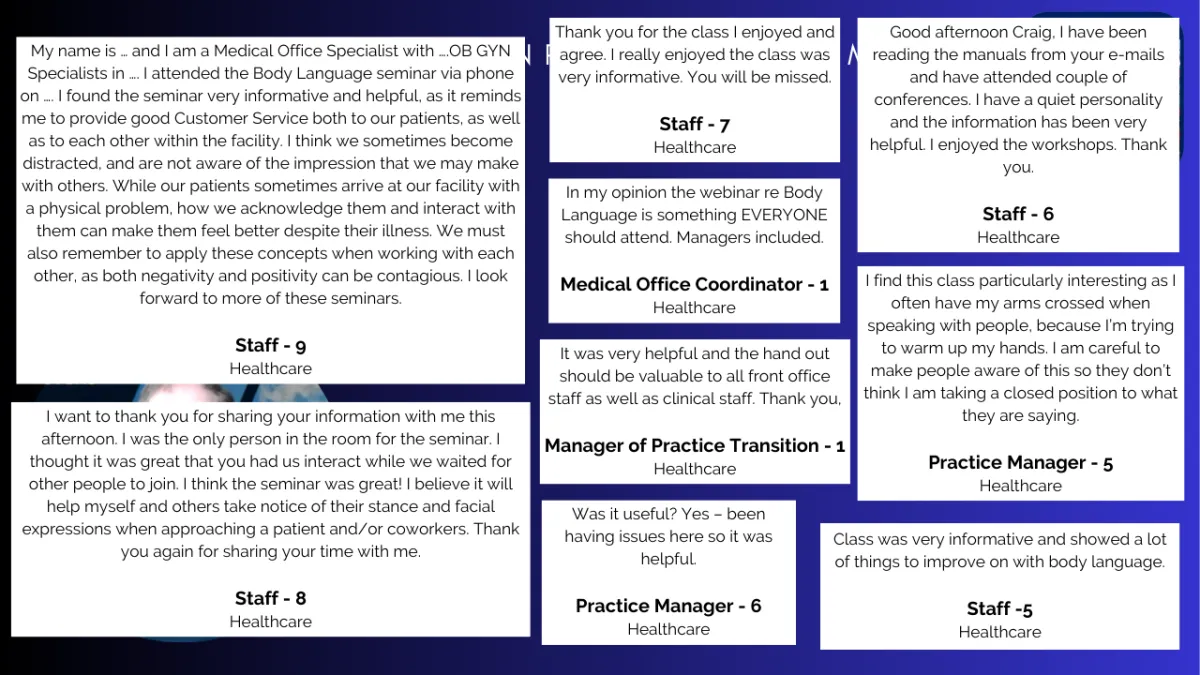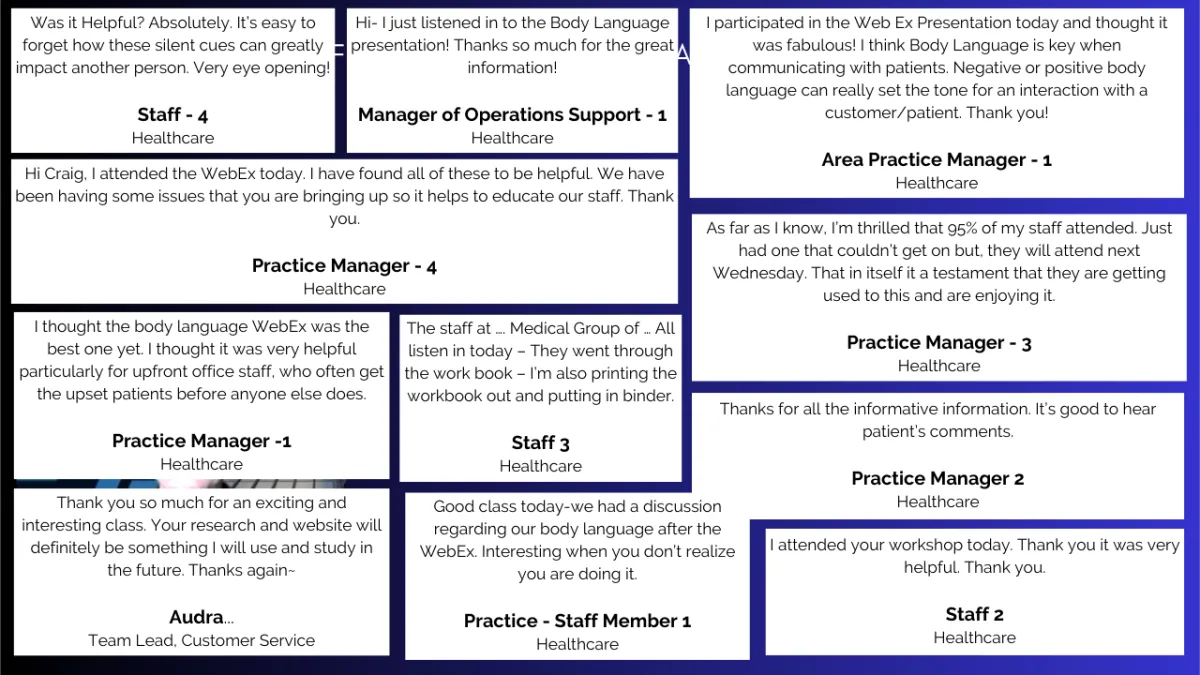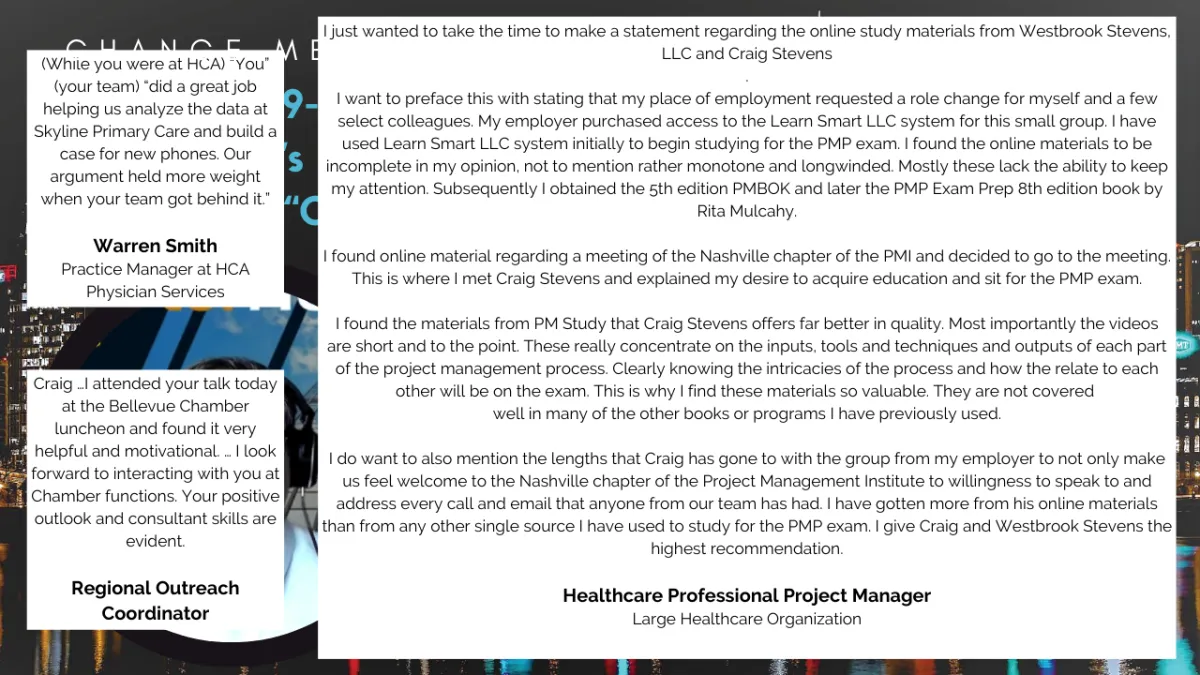
The Change Mentor Academy's Trainings
Training at Your Pace
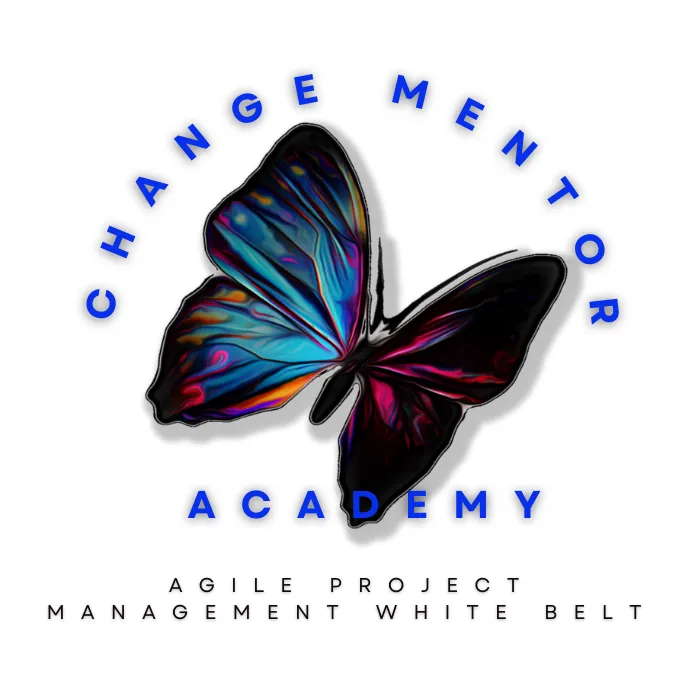
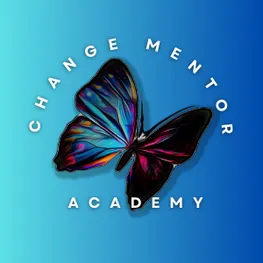
Your Choice
In Person Live
(Virtually or Face-to-face)
+ Evergreen Gamified Interactive Training with Live Virtual Coaching
<Change Mentors Academy has Two Types of Training>
1. Customized Business Training
<On this Page>

2. Arts and Family Curriculum Link
What to do next!

Step 1
Look at the courses we offer below. Contact us for more information when you have questions.

Step 2
Select the course that fits your needs. Contact us for more information when you have questions.

Step 3
Click on the button to sign up for the course or the waiting list. AND Contact us for more information when you have questions.
The Types of Facilitation/Training (Everything can be customized)
The Seven Attributes of Excellent Management
The Gates to Change (Selecting Projects)
The Processes of Change Management
The Drivers of Change Management
(Where the Changes Come From)
Secondary Drivers of Change
Some Other Stuff
Change is Continuous and These Nine Management Models Can Help You Master Change Management and Organizational Excellence.
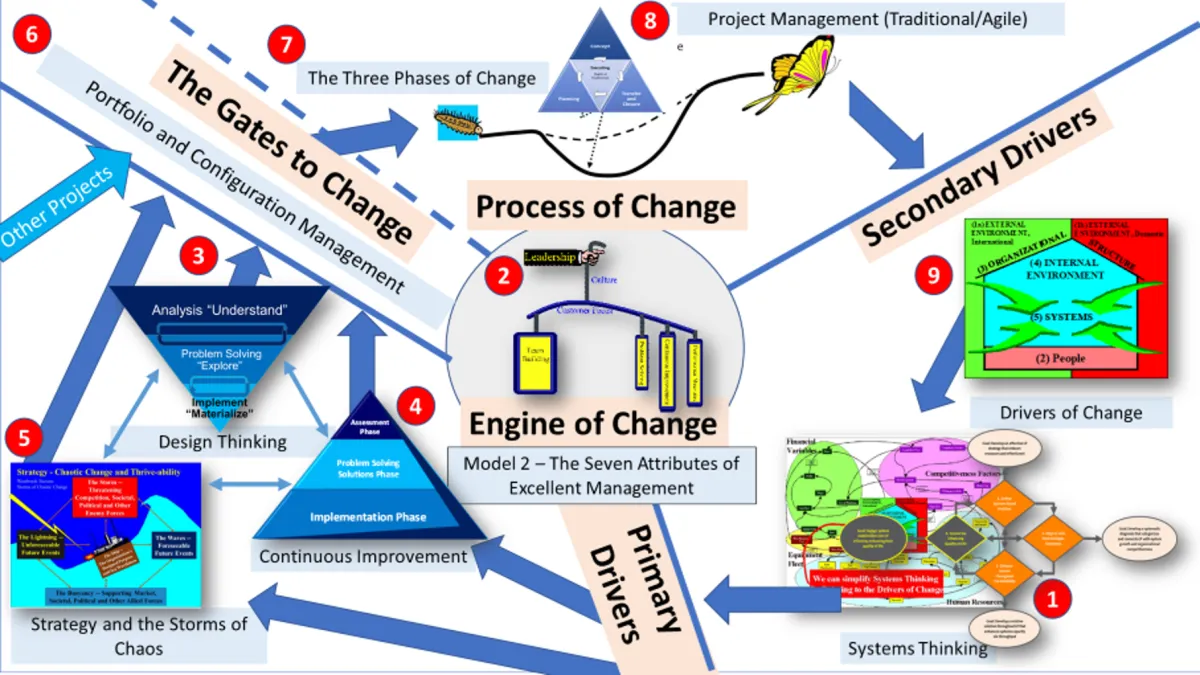
The Secondary Drivers of Change (1st Model of two)
Model 1 - The Loops and Layers of Systems Thinking (LLST)
Start with Systems Thinking
The Loops and Layers of Systems Thinking is a structured approach to understanding and improving complex systems. It is important to recognize the interconnected cycles (loops) and hierarchical structures (layers). Systems Thinking applies to organizations, projects, business processes, and societal structures. It is required when helping leaders, managers, and change agents navigate complexity effectively.
Simplify the Complicated Interactions Between Groups
Layers Explains How Physical Systems Work
Loops Explain How Processes Work

Workshops for Your Team
LLST WB – Loops and Layers of Systems Thinking (White Belt) - Here we give an Executive Summary of Systems Thinking to define the systems thinking loops made famous by Peter Senge in his book The Fifth Discipline, the concepts of inter-systems
relationships of Layers, and the Dr. Rupy Shawney’s People-Centric Systems Thinking Model. This is a two-hour training workshop.
LLST YB – Loops and Layers of Systems Thinking (Yellow Belt) – The yellow belt level explains how one would support each of the Systems Thinking models to reach operational excellence from a manager’s point of view.
LLST GB – Loops and Layers of Systems Thinking (Green Belt) – The green belt level equips practitioners with the tools needed to use Systems Thinking to reach operational excellence.
LST BB – Loops and Layers of Systems Thinking (Black Belt) – The Black Belt is a Train-the-trainer level. We help you master Systems Thinking so that you can teach and become an internal System Thinking consultant to your organization.
LLST MBB – Loops and Layers of Systems Thinking (Master Black Belt) – The Master Black Belt, teaches advanced systems thinking topics and allows you to support us as trainers or consultants.
The Engine of Change Model - Drives Operational Excellence
Model 2 - The Seven Attributes of Excellent Management (7AEM)
The Engine that drives Everything
Building Excellent Leaders
Building Excellent Cultures
Building Excellent Customer Service
Building Excellent People Skills
Building Excellent Core Competencies
Excellence in Continuous Improvement of Processes and Systems
Building Excellent Performance Measures (Metrics)
The Seven Attributes of Excellent Management provide a structured framework for achieving organizational success. These seven attributes—Building Excellent Leadership, Building an Excellent Culture, Building Excellent Customer Focus, Building Excellent People Skills and Teams, Building Excellent Core Competencies and Problem Solving, Excellence in Continuous Improvement of Processes and Systems, and Building Excellent Performance Measures—must be balanced to create a thriving organization. Leadership sets the vision and direction, while Culture fosters the right values and behaviors. Customer Focus ensures that the organization meets and exceeds expectations. Strong People/Teams drive collaboration, and effective Core Competencies and Problem Solving enables innovation. Continuous Improvement helps organizations adapt and grow, and Performance Measures ensure accountability and progress. When these elements work together harmoniously, they create a resilient and high-performing organization.

Workshops for Your Team
7AEM WB – The Seven Attributes of Excellent Management (White Belt) – Here we give an Executive Summary of the Seven Attributes of Excellent Management – 1. Building Excellent Leaders; 2. Building an Excellent Culture; 3. Building Excellent Customer Focus; 4. Building Excellent People Skills; 5. Building Excellent Core Competencies; 6. Building Excellence in the Continuous Improvement of Systems and Processes; and 7. Building Excellence in Performance Measures.
7AEM YB – The Seven Attributes of Excellent Management (Yellow Belt) – The yellow belt level explains how one would use each of the Seven Attributes to reach operational excellence from a manager’s point of view.
Attribute 1 – Building Excellent Leaders
Attribute 2 – Building Excellent Cultures
Attribute 5 – Building Excellent Core Competencies
Attribute 7 – Building Excellent Performance Measures
7AEM GB – The Seven Attributes of Excellent Management (Green Belt) – The green belt level builds on the first two levels and equips practitioners with the tools needed to use each of the Seven Attributes to reach operational excellence. During this training, we go into detail for each of the Attributes:
Attribute 3 – Building Excellent Customer Focus (The best way to teach customer focus in with a year around stand-alone training designed to improve Customer Experiences)
Attribute 4 – Building Excellent People Skills
Attribute 6 – Excellence in Continuous Improvement of Systems and Processes (We go deeper into Continuous Improvement in Model 4)
7AEM BB – The Seven Attributes of Excellent Management (Black Belt) – The Black Belt is a Train-the-trainer level. We help you master the Seven Attributes so that you can teach and become an internal consultant to your organization.
7AEM MBB – The Seven Attributes of Excellent Management (Master Black Belt) – The Master Black Belt, teaches advanced topics and allows you to support us as trainers or consultants.
The Primary Drivers of Change Models (Where Projects Come From)
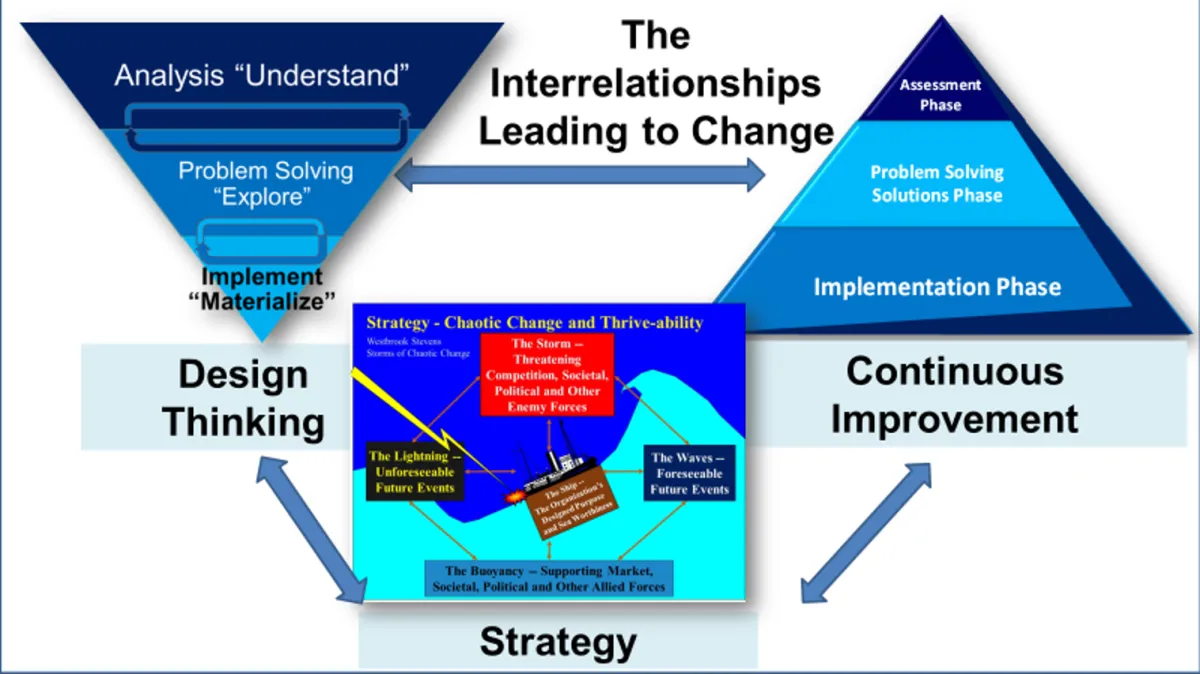
Model 3 - The Three Phases of Design Thinking (3PDT)
Creating new products and services
Several organizations mastered Design Thinking and have their own formulas. I studied those models and simplified it form my clients. We can boil all the other models into 3 easy to follow phases: Analysis to Understand, Problem Solving to Explore, and Implement to Materialize.
Consolidates the great Design Thinking systems

Workshops for Your Team
3PDT WB – The Three Phases of Design Thinking (White Belt) – Here we give an Executive Summary of the Three Phases of Design Thinking: 1. The Analysis or understanding Phase; 2. The Problem Solving or Exploring Phase; and 3. The Implementation or Materializing Phase.
3PDT YB – The Three Phases of Design Thinking (Yellow Belt) – The yellow belt level explains how one would use Design thinking to reach operational excellence from a manager’s point of view.
3PDT GB – The Three Phases of Design Thinking (Green Belt) – The green belt level equips practitioners with the tools needed to use each of the Design Thinking to reach operational excellence.
3PDT BB – The Three Phases of Design Thinking (Black Belt) – The Black Belt is a Train-the-trainer level. We help you master Design Thinking so that you can teach and become an internal consultant to your organization.
3PDT MBB – The Three Phases of Design Thinking (Master Black Belt) – The Master Black Belt, teaches advanced topics and allows you to support us as trainers or consultants.
Model 4 - The Three Phased of Continuous Improvement (3PCI)
ONly Three Phases to Learn
The 3 Phases Continuous Improvement - Assessment, Problem Solving, and Implementation - simplifies the complexities of methodologies like Lean, Six Sigma, and Kaizen into an easy-to-understand approach that even a doctor can understand (ha). The Assessment identifies inefficiencies and areas for improvement using data and observations. Problem Solving applies structured methods develop effective solutions. Implementation ensures that improvements are executed, tested, and sustained for long-term success. These three phases can drive continuous improvement without getting lost in technical jargon or overly complex frameworks.

Workshops for Your Team
3PCI WB – The Three Phases of Continuous Improvement (White Belt) – Here we give an Executive Summary of the Three Phases of Continuous Improvement: 1. The Analysis Phase; 2. The Problem Solving; and 3. The Implementation Phase and how Lean Six Sigma fits into the model.
3PCI YB – The Three Phases of Continuous Improvement (Yellow Belt) – The yellow belt level explains how one would use the Three Phases of Continuous Improvement to reach operational excellence from a manager’s point of view. This will also lead to a Yellow Belt certification in Lean Six Sigma.
3PCI GB – The Three Phases of Continuous Improvement (Green Belt) – The green belt level equips practitioners with the tools needed to use each of the Three Phases of Continuous Improvement: to reach operational excellence. This will also lead to a Green Belt certification in Lean Six Sigma.
3PCI BB – The Three Phases of Continuous Improvement (Black Belt) – The Black Belt is a Train-the-trainer level. We help you master the Three Phases of Continuous Improvement: so that you can teach and become an internal consultant to your organization. This will also lead to a Black Belt certification in Lean Six Sigma.
3PCI MBB – The Three Phases of Continuous Improvement (Master Black Belt) – The Master Black Belt, teaches advanced topics and allows you to support us as trainers or consultants. This will also lead to a Master Black Belt certification in Lean Six Sigma.
We Work With Certification Organizations
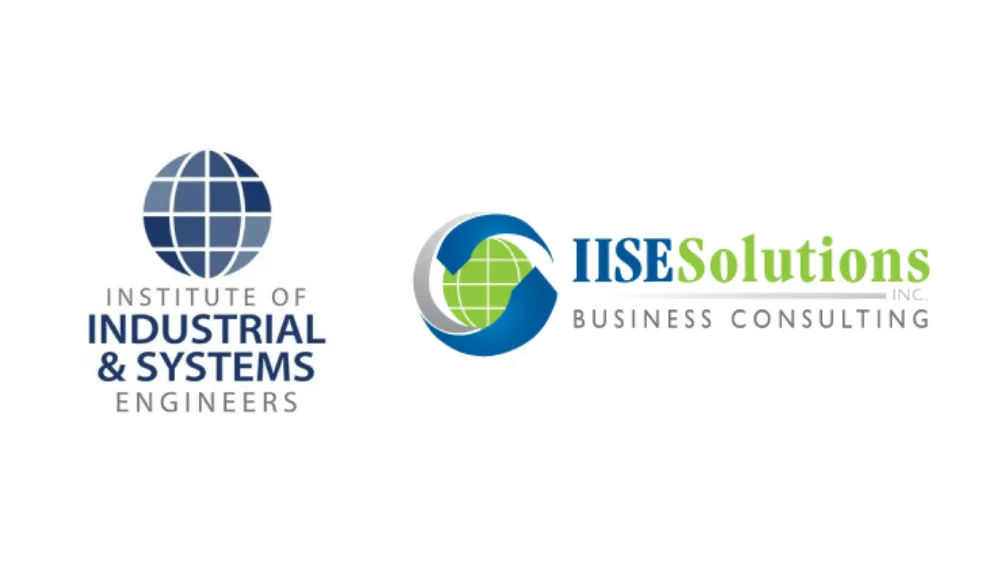
The Institute of Industrial and Systems Engineers (IISE) Lean Six Sigma Certifications

6SigmaStudy
Lean Six Sigma Training Certifications
Model 5 - The Five Elements of Strategy and the Storms of Chaos (5ESC)
Organized SWOT into 5 Elements
The Strategy and the Storms of Chaos Model is a framework for navigating the unpredictable forces that impact organizations. It likens an organization to a ship sailing through turbulent waters, where waves represent foreseeable market trends, lightning symbolizes sudden, unpredictable disruptions, buoyancy stands for supportive alliances and strengths, and storms embody threats like competition or economic downturns. The ship itself represents the organization’s internal strengths and weaknesses. By using AI-driven data analysis, companies can forecast waves, prepare for lightning strikes, leverage buoyancy, and withstand storms in real time, making strategic decisions with unprecedented speed and accuracy.

Workshops and/or Highly Facilitated Strategy Sessions for Your Team
5ESC WB – The Five Elements of Strategy and the Storms of Chaos (White Belt) – Here we give an Executive Summary of The 5 Elements of Strategy and the Storms of Chaos: The Opportunities and Threats of 1. The Waves of Trends, 2. The Bouancy of Everything Keeping You Afloat; 3. The Lightning of the Unexpected; 4. The Storms Trying to Sink You; and the Strengths and Weaknesses of 5. Your Organizational Ship. This is a two-hour training workshop.
5ESC YB – the Five Elements of Strategy and the Storms of Chaos (Yellow Belt) – The yellow belt level explains how one would support each of the 5 Elements of Strategy and the Storms of Chaos model to reach operational excellence from a manager’s point of view.
The Gates to Change Models
Model 6 – Portfolio and Configuration Management (GPCM)
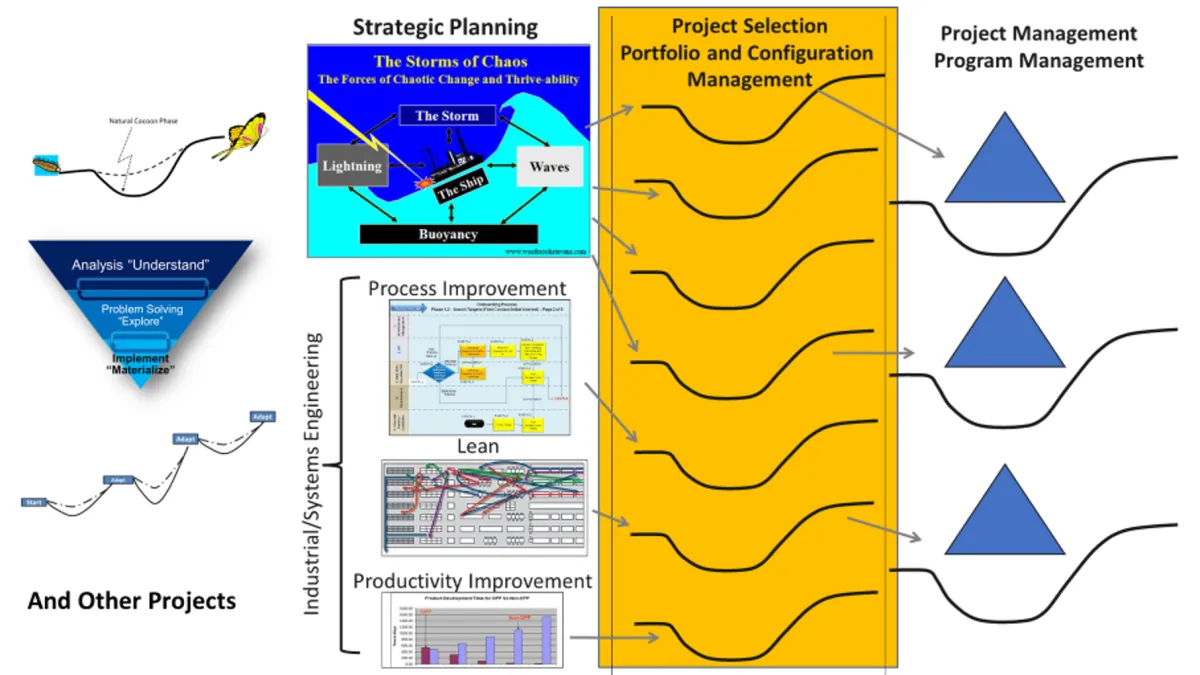
Which changes do we accept and what project do we priorize
Portfolio Management and Configuration Management serve as critical gates to change , ensuring that organizations make strategic, informed decisions before selecting and executing projects.
Portfolio Management - prioritizes projects based on alignment with business goals, available resources, and potential return on investment, preventing wasted effort on initiatives that do not add value.
Configuration Management - ensures that proposed changes align with existing systems, regulatory requirements, and organizational capabilities, preventing unintended disruptions. Together, these disciplines provide a structured approach to evaluating and approving changes, ensuring that only the most impactful, feasible, and well-integrated projects move forward.
Workshops for Your Team
GPCM WB – The Gates to Change – Portfolio and Configuration Management (White Belt)– Here we give an Executive Summary of The Gates to Change and define Portfolio and Configuration Management. This is a two-hour training workshop.
GPCM YB – The Gates to Change – Portfolio and Configuration Management (Yellow Belt) – The yellow belt level explains how one would support each of the both Portfolio and Configuration Management models to reach operational excellence from a manager’s point of view.
GPCM GB – The Gates to Change – Portfolio and Configuration Management (Green Belt) – The green belt level equips practitioners with the tools needed to use Portfolio and Configuration Management to reach operational excellence.
Using Portfolio Management
Using Configuration Management: 1. Configuration Identification; 2. Configuration Change Control; 3. Configuration Tracking; and 4. Configuration Audits.
GPCM BB – The Gates to Change – Portfolio and Configuration Management (Black Belt) – The Black Belt is a Train-the-trainer level. We help you master Portfolio and Configuration Management so that you can teach and become an internal consultant to your organization.
GPCM MBB – The Gates to Change – Portfolio and Configuration Management (Master Black Belt) – The Master Black Belt, teaches advanced systems thinking topics and allows you to support us as trainers or consultants.Here's some stuff
The Process of Change Models:
Model 7 – The Three Phases of Change Management (3PCM)
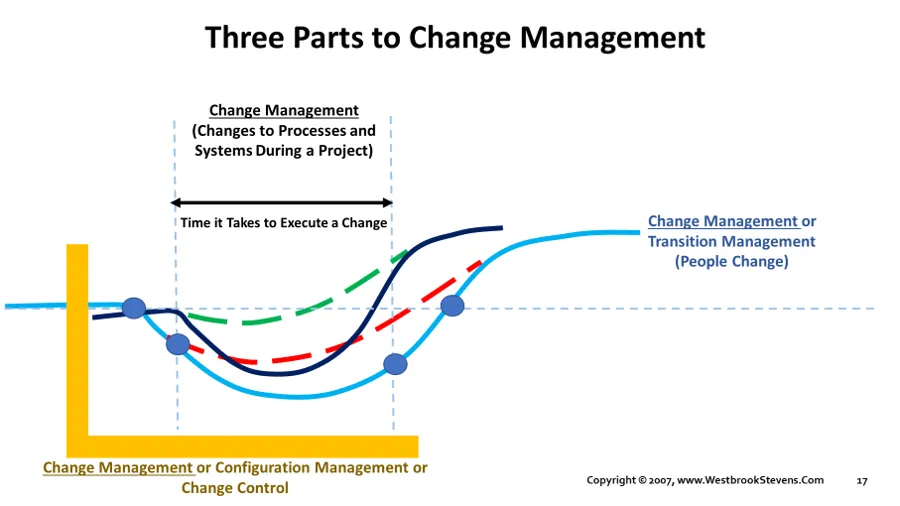
Three Types of change in Three Phases Each
Change management comes in three distinct forms, each playing a critical role in successful transformation.
Change control (Configuration Management) ensures that changes to systems, processes, or products are tracked, evaluated, and implemented in a controlled manner, preventing chaos and unintended consequences.
Project management (Technical Change Management) focuses on executing the change itself, coordinating tasks, resources, and timelines to bring new initiatives to life.
People-focused Transitional change management addresses the human side, helping individuals transition smoothly by managing resistance, communication, and training. Together, these three types of change management create a structured approach to implementing change effectively and sustainably.
Workshops for Your Team
3PCM WB – The Three Phases of Change Management (White Belt) – Here we give an Executive Summary of The Three Phases of Change and define the full cycle of change management. This is a two-hour training workshop.
3PCM YB – The Three Phases of Change Management (Yellow Belt) – The yellow belt level explains how one would support both Technical and People Change Management to reach operational excellence from a manager’s point of view.
3PCM GB – The Three Phases of Change Management (Green Belt) – The green belt level equips practitioners with the tools needed to use the Three Phases of Change Management to reach operational excellence. Focusing People Change Management. Relationships to Predictive/Traditional and Agile Project Management (We go deeper into Project Management in the Project Management Track)
3PCM BB – The Three Phases of Change Management (Black Belt) – The Black Belt is a Train-the-trainer level. We help you master Change Management so that you can teach and become an internal consultant to your organization.
3PCM MBB – The Three Phases of Change Management (Master Black Belt) – The Master Black Belt, teaches advanced Change Management topics and allows you to support us as trainers or consultants.
Model 8 – The 4 Phases of Traditional/Predictive and Agile Project Management (4TPM and 4APM)
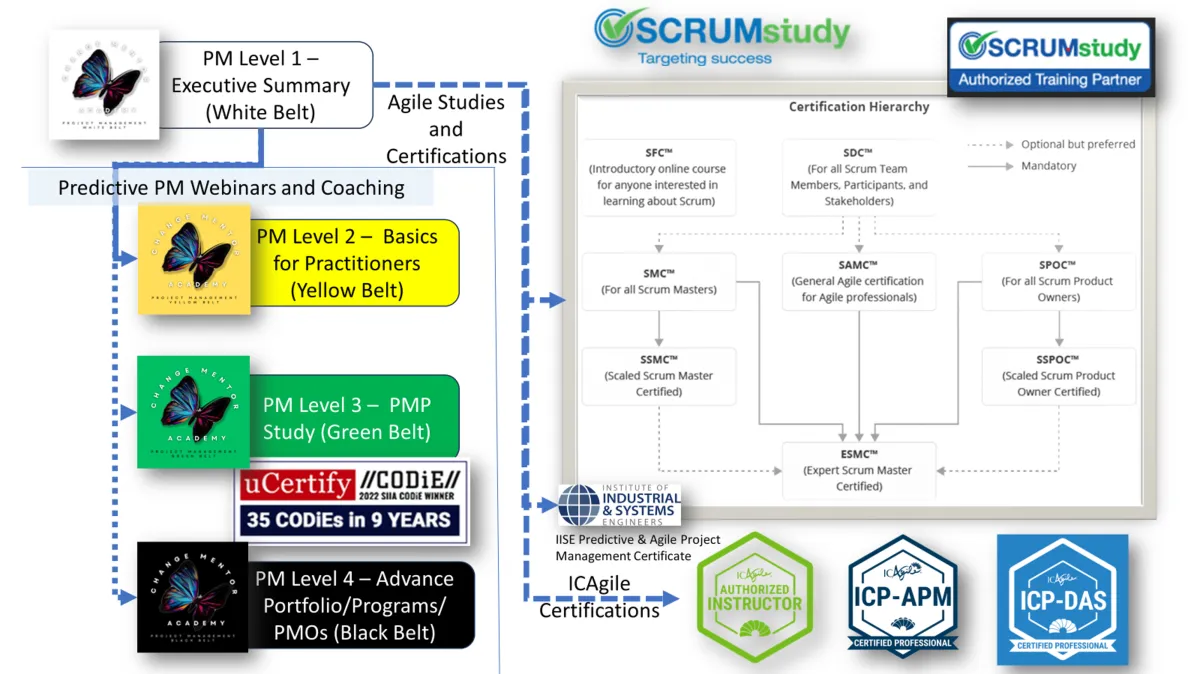
Agile and Predicitive Project management
To simplify both predictive and adaptive project management they both follow four phases: Concept, Planning, Execution, and Transfer/Closure. Predictive projects plan everything upfront, while adaptive (Agile) projects stay flexible and will do the same type of exercise only in short sprints. In the Concept Phase we set goals and answer the question what does good look like, in the Planning Phase we create a roadmap, In the Execution Phase we do the work (iteratively and incrementally in Agile sprints), and in the Transfer/Closure Phase we deliver the results. Agile repeats these phases in cycles, allowing real-time continuous improvement. The missing phases are what happens before the project starts and after the project ends.
The Secondary Drivers of Change (2nd Model of two)
Model 9 - The Five Secondary Drivers of Change (5SDC)
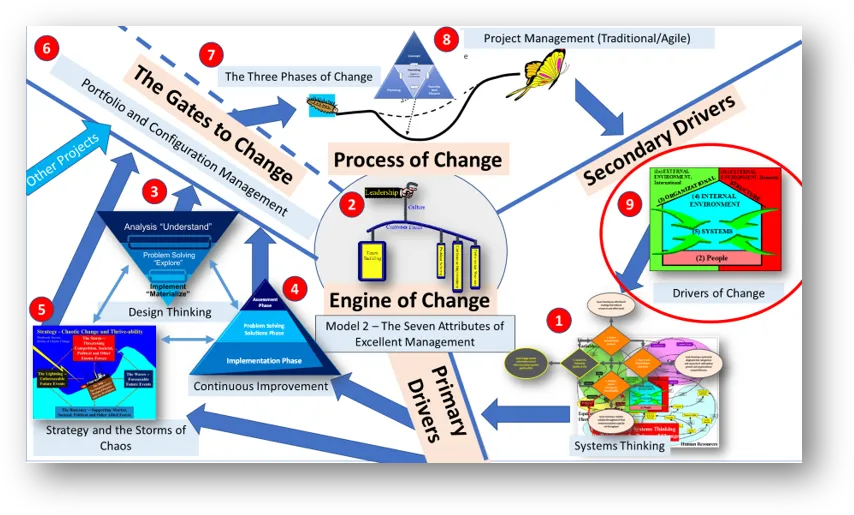
Every Change Drives Secondary Changes
Every change in an organization sets off a chain reaction, much like a pinball bouncing off bumpers. The 5 Elements of the Secondary Drivers of Change Model explain this ripple effects through Processes, People, Technology, Structure, and Culture. Adjusting one element—like introducing new software—impacts workflows, roles, training needs, reporting structures, and even the company mindset. Just like in a pinball machine, one small change can send the whole system into motion, making it crucial to manage change (w)holistically.

the Change Tor-Mentor - Your Facilitator for all these trainings
Craig A. Stevens, PMP, LSSMBB, Agile Coach
Craig is your coach (this picture is old). He is a business consultant, Industrial and Systems Engineer, and Program/Project Manager for over 40 years. He is a college professor, The Flags of America Artist, The Change tor-Mentor Speaker, and Author of a couple dozen books . He has taught at 6 Universities and for many corporate training organizations like the American Management Association. He's worked for over 100 companies and some of the biggest companies in the world. He has developed several business models and he will be bringing his wealth of experience to share the best strategies for building teams to tackle projects.
Some Testimonials About Craig's Trainings and Books
Don't miss this premium training
